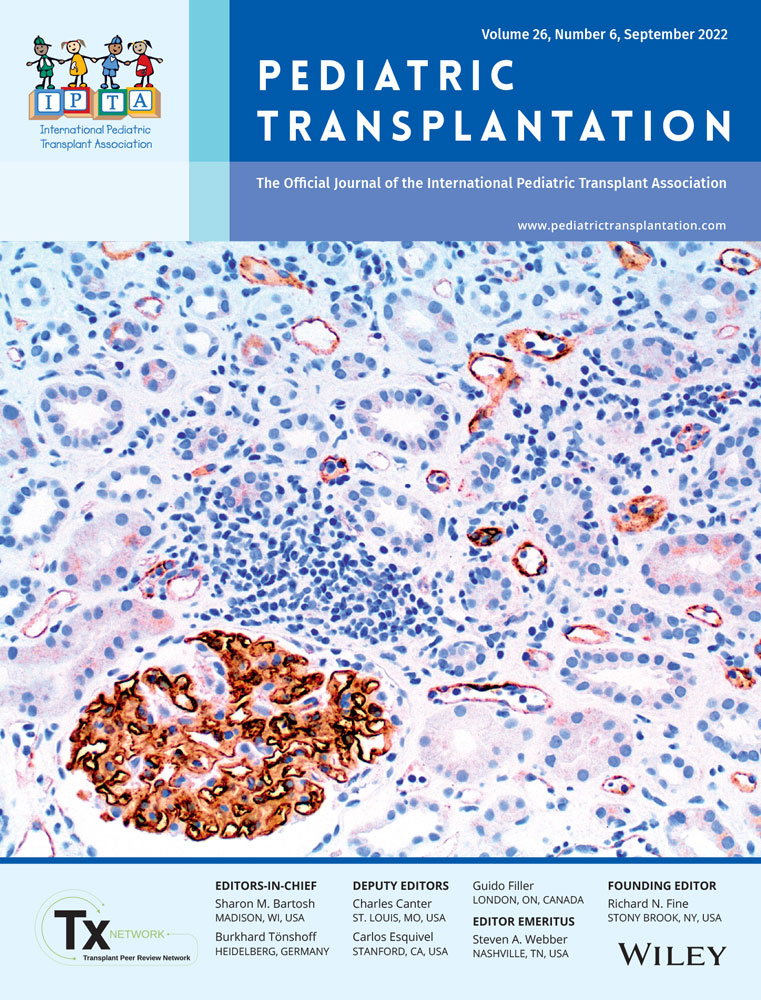Low post-transplant measles and varicella titers among pediatric liver transplant recipients: A 10-year single-center study
Abstract
Background
Vaccine preventable illnesses are important sources of morbidity, mortality, and increased healthcare costs in pediatric LT recipients. Our aim was to measure the seroprevalence of antibodies to measles and VZV in this population.
Methods
We conducted a retrospective chart review of 44 patients who received LT before age 18 at UCLA Mattel Children's Hospital from January 2008 to December 2017.
Results
Median age at transplantation was 2.5 years (IQR 1.2–7.7). Post-transplant measles antibodies were present in 17 of 37 patients (46%); risk factors for seronegativity included younger age at transplant (p = .02) and greater time from transplant to testing (p = .04). Post-transplant VZV antibodies were present in 17 of 39 patients (44%); risk factors for seronegativity included greater time from transplant to testing (p = .04). 6 of 16 patients (38%) who tested positive for pre-transplant VZV antibodies tested negative after transplantation. Fourteen of 20 patients (70%) with at least 1 documented dose of the MMR vaccine tested positive for post-transplant measles antibodies. Ten of 20 of patients (50%) with at least 1 documented dose of the VZV vaccine tested positive for post-transplant VZV antibodies. We also describe 10 patients who received post-transplant measles and VZV vaccines without documented complications.
Conclusions
Our study suggests that pediatric LT patients are at greater risk of contracting measles and VZV despite vaccination status, and that prevalence of measles and VZV antibodies decreases as time from transplantation increases. This should weigh into the institutional risk–benefit assessment when deciding whether or not to administer LAVs to these patients.
CONFLICT OF INTEREST
The authors declare no conflicts of interest.
Open Research
DATA AVAILABILITY STATEMENT
Not applicable.




